Interactive Digital Signage and its Future Impact on Advertising
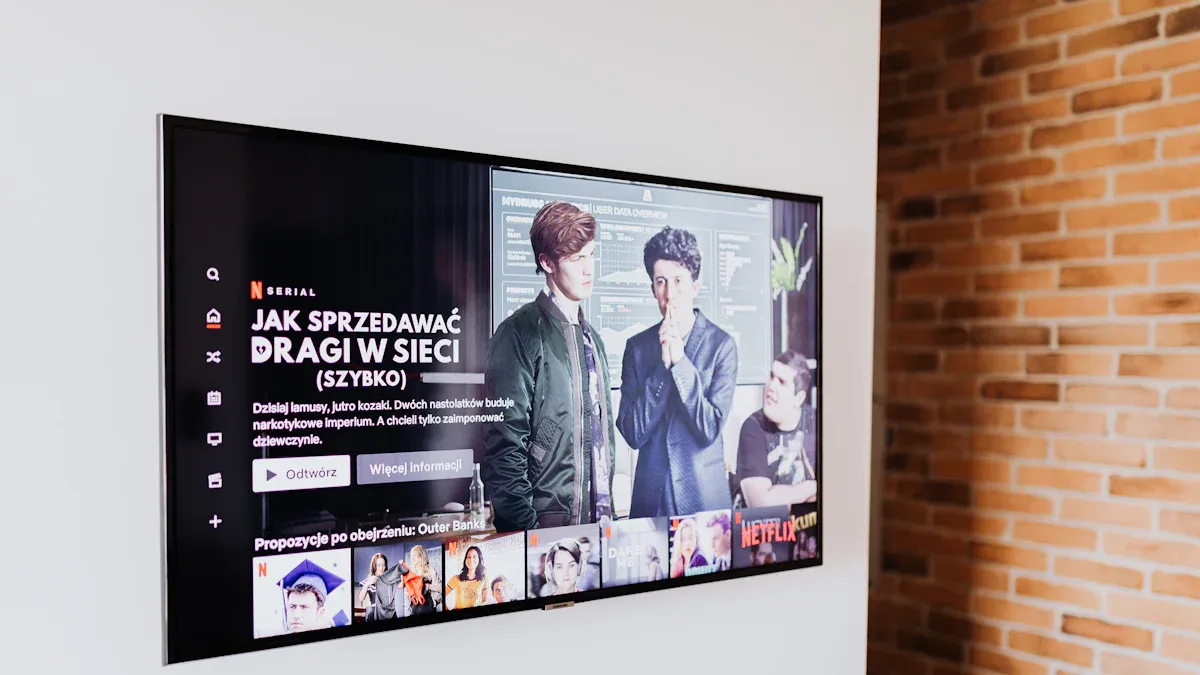
Interactive digital signage changes ads by letting people join in. Brands use fun experiences to get attention and make people act. New data shows targeted ads on digital signage work twice as well as non-targeted ads. Digital signage in ads gives a 31.8% sales boost and helps people remember by 83%.
Interactive digital signage lets people take part, not just look at messages. These experiences make people stay longer and help plan future marketing.
Key Takeaways
Interactive digital signage makes ads more fun and personal. People can touch, swipe, or explore the content. This grabs attention and helps increase sales.
Using AI, real-time data, and cloud technology helps brands a lot. They can show the right message to the right person at the right time. This makes people more interested and loyal.
Digital signage works well in many places. It is used in stores, events, offices, and smart cities. It makes things easier and more fun for everyone.
Brands that use interactive digital signage have happier customers. They build stronger connections and get better results than with old ads.
To do well, advertisers should set clear goals and make fun content. They should use data in smart ways and try new technology. They also need to keep making their digital signage better.
What Is Interactive Digital Signage?
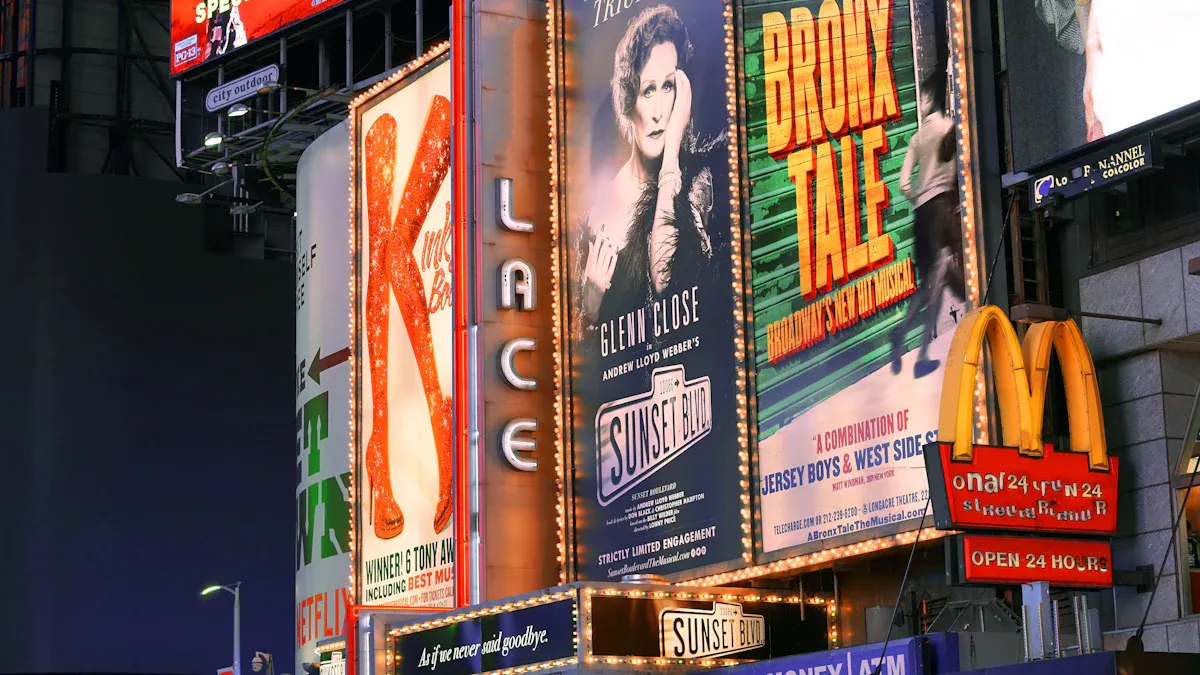
Key Features
Interactive digital signage changes how ads work. It makes ads more fun and interesting for people. Instead of just looking, people can join in. This technology lets users feel like they are inside the digital world. The system reacts right away to what people do. Every person gets a different experience. Interactive content can show videos, pictures, games, and even augmented reality. Virtual things, like 3D graphics, make real places look cooler. People can pick what they want to see and explore their favorite parts.
A survey showed that 74% of people like interactive digital signage more than regular signs. The content can change all the time, so messages stay new and important. Lights that turn on when you move and cool experiences can make boring places exciting. Big brands like Coca-Cola use 3D billboards to get people’s attention. Places like the Viva Vision canopy in Las Vegas show how powerful interactive displays can be.
Note: Using real-time data and instant alerts helps businesses send the right messages fast and make better choices.
How It Works
Interactive digital signage uses hardware, software, and networks to work. The system has touchscreens, sensors, and cameras to see what people do. Special software controls the content and lets it update quickly. It can also connect with other platforms easily.
A case study from a top company shows why scalability and security matter. Their system can handle over 10,000 users at once. It loads 40% faster because of smart upgrades like caching. Only certain people can access private info, and encryption keeps it safe. Fast development helps the system fit business needs.
Interactive content changes for each audience, so everyone gets a special experience. Analytics track how people use the signs and help brands improve their ads. These features make digital signage a strong tool for today’s advertising.
Evolution of Digital Signage
From Static to Interactive
Digital signage has changed how brands talk to people. Before, static signs only showed one message. Now, interactive digital signage gives dynamic dooh experiences that react to each person. This change happened because businesses wanted more attention and better results.
Digital displays get 400% more views than static signs.
People remember 83% of dynamic content, much more than old signs.
A 2025 Nielsen study says digital displays keep 65% of viewers’ attention. Static signs keep only 40%.
Stores like Target saw a 23% jump in foot traffic after using digital signage. McDonald's had a 15% rise in add-on sales with digital menu boards.
Using digital signage can cut five-year costs by 48% compared to print.
Modern digital out-of-home advertising uses special hardware and software. These systems let brands update messages fast and add interactive features. Brands can change messages quickly and keep content new. This helps make better experiences for every person.
Note: Where you put screens and how often you update matters. Screens at key spots can triple conversion rates. Weekly updates help keep 28% more viewers.
Impact on Engagement
Dynamic dooh has changed how people join in with ads. Interactive digital signage lets people touch, swipe, or scan for more info. These actions turn viewers into active users. This makes customers more interested and happier.
Businesses use data to learn about who is watching and what they like.
Real-time checks show which content works best and help make better ads.
Social media comments and foot traffic numbers give more info about engagement.
Brands see more sales and stronger bonds with customers. For example, digital signage raises average purchases by almost 30%. It also makes customers 46% more satisfied. The global digital signage market may reach $29.8 billion by 2024. This shows people want more engaging experiences. As dynamic dooh grows, businesses will find new ways to connect and get better results.
Key Technologies
AI and Personalization
Artificial intelligence helps make digital signage more personal. AI systems look at age, actions, and likes to show special content. Stores use AI to change ads when more people walk by. They show the best deals during busy times. Programmatic digital signage picks where and when to show ads using live data. AI changes what is on billboards based on time, weather, or place. For example, a screen might show hot coffee in the morning. It could show cold drinks later in the day. Computer vision and sensors can see who is watching. This helps brands show ads that fit the audience. AI can also use sensors to see how people feel. This makes the content more fun and interesting. Machine learning checks how long people look and if they buy something. This helps brands get better results. AI and machine learning help signs learn and change fast. This keeps the messages new and important.
AI-driven personalization turns digital signage into a smart tool. It can change fast and always get better.
Cloud and Analytics
Cloud and analytics are important for interactive digital signage. Cloud systems let people change content from far away. They can update messages right away. Analytics turn lots of data into helpful ideas. This helps show messages that match what people like. Real-time analytics watch how well the signs work. They help businesses make quick choices. Good internet and strong servers keep everything running well. Analytics power things like touchscreens and counting who looks at the signs. This makes signs more fun and useful. Automation uses data to show the right message at the right time. This helps people pay more attention. One system can update all screens at once. This saves time and work. Cloud and analytics help businesses work better, connect with customers, and sell more by using smart content.
AR, VR, and Touchscreens
Augmented reality, virtual reality, and touchscreens make digital signage exciting. The smart signage market shows AR and VR make ads more fun. These tools help get more people interested and buying. Touchscreens and face recognition make signs more interactive. They also help stores earn more money. In stores, touchscreens and sensor signs let people look at products. They can check if something is in stock and get tips just for them. AR and VR let people see how things look in real life. This makes people happier and more likely to buy. These tools help run AR campaigns and make signs more interesting. As more people use these tools, stores see better customer interest and work faster.
Interactive Advertising in Practice
Retail and Shopping
Retailers use interactive advertising to make shopping more fun. Tesla showrooms are a good example.
Tesla put in digital signage with touchscreens, virtual reality test drives, and live data screens.
These features help people learn about electric vehicles and see their choices.
Customers can picture owning a Tesla, which helps more people buy.
The cool experience also makes Tesla look like a smart brand.
Tesla gets helpful data from how people use the displays to make marketing better.
Retailers watch how people use the signs with different measurements:
Description | |
|---|---|
Customer Engagement Score | Adds up how long and how much people use the displays |
Dwell Time | Checks how long people stay in certain spots |
Interaction Rate | Shows what percent of people use the interactive screens |
Conversion Rate | Counts how many shoppers end up buying something |
Average Transaction Value | Looks at how much more people spend after using the signs |
Net Promoter Score | Tells if people would tell friends to visit the store |
Customer Effort Score | Rates how easy it is to use the interactive screens |
These numbers help stores change their signs and content to make shopping better and sell more.
Smart Cities and Offices
Smart cities and offices use interactive digital signage to help people and services connect. These ads give real-time bus and train updates, help people find their way, and send emergency alerts. Offices use these signs for booking meeting rooms, checking in visitors, and sharing news with workers. These ads link phones, kiosks, and cloud systems for a smooth experience. Workers and visitors get information fast, so daily jobs are easier and quicker.
Events and Experiences
Events use interactive ads to make things more fun and special. For example, a guest named Eva uses an AI helper to plan her day. When she gets there, digital signs know who she is and give her tips just for her. She gets updates, joins social boards, and pays at staffless bars with her wearable tech. After the event, she gets a digital package with highlights and info. These features make events more personal and keep people interested. The events industry keeps using digital signage to meet what people want and give more value.
Benefits of Digital Signage in Advertising
Engagement and Attention
Digital signage grabs people’s attention better than old ads. It makes people want to join in, not just watch. When people see moving displays, they remember the message more. Interactive ads get 94% more views and 52.6% more engagement. People spend about 13 minutes with interactive content. They only spend 8.5 minutes with static content. This gives brands more time to share their ideas.
A table shows how digital signage beats traditional signage:
Metric / Feature | Digital Signage | Traditional Signage |
|---|---|---|
Audience Views | Captures 400% more views than static displays | Lower engagement |
Purchase Likelihood | 68% of customers more likely to buy | Not specified |
Recall Rate | 83% recall rate | Not specified |
Impulse Purchases | Influences 19% of consumers | Not specified |
Influence from Digital Menus | 29.5% of customers influenced | Not applicable |
Content Type | Dynamic, interactive, real-time updates | Static, non-interactive |
Initial Investment Cost | Higher initial cost, higher ROI | Lower initial cost |
Reliability | Needs power and internet | More reliable, no power needed |
Engagement Features | Motion graphics, touchscreens, QR codes | Bold designs, strategic placement |
80% of shoppers go into stores after seeing digital signage.
19% buy things on impulse because of these displays.
71% say digital signage stands out more than online ads.
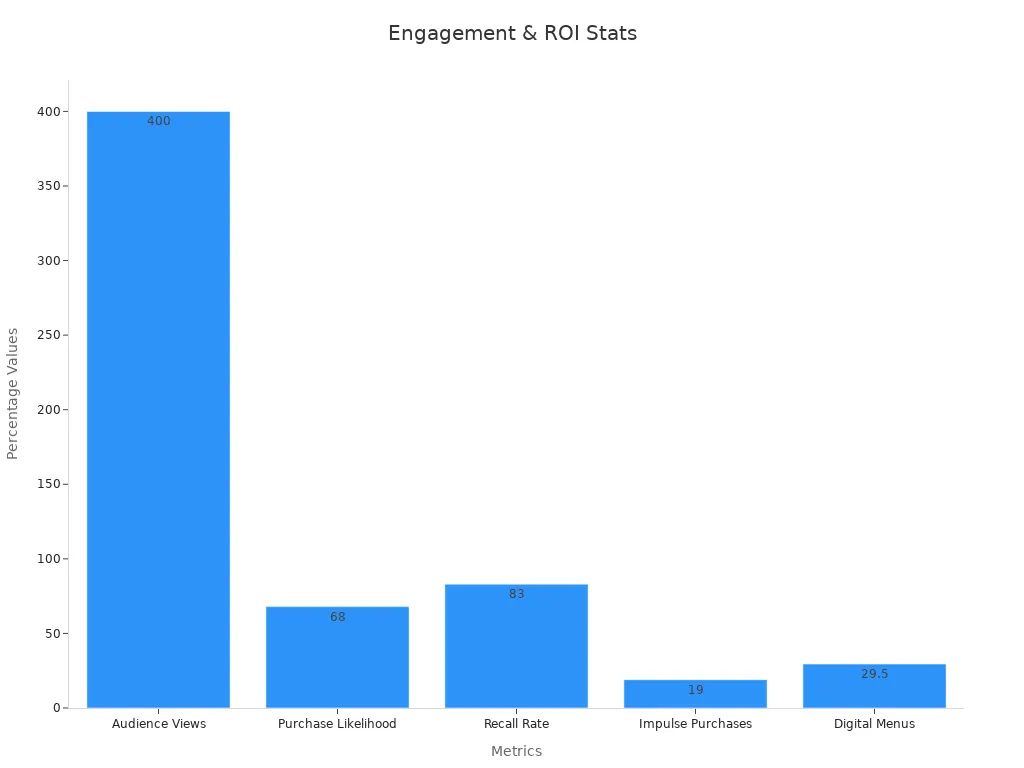
Real-time updates keep the content new and interesting. Advertisers can change messages fast for the time, weather, or crowd. This makes digital signage stay useful and fun. Interactive digital signage tracks how people use the screens. These facts help brands make better ads and improve their plans.
Studies show these results are true. Informational content in digital signage gets more likes and shares. Entertainment and relationship content do not work as well. This means brands should use interactive content that teaches and involves people.
Personalization and ROI
Personalization is a big plus for digital signage in advertising. Real-time tech lets brands show different ads based on place, time, and what people do. Interactive content can switch fast, so everyone sees something special. This makes each person’s experience feel unique and right for them.
Personalization helps brands earn more money and loyal fans. Brands see more sales, stronger loyalty, and better results. The table below shows how digital signage helps businesses:
Metric Description | Economic Impact / Statistic |
|---|---|
Increase in customer loyalty due to digital signage | 233% higher customer loyalty |
Annual revenue increase linked to employee engagement | 26% increase in annual revenue |
Increase in brand awareness from digital signage | 47.7% increase |
Sales increase observed by brands after digital signage | 33% increase in sales (4 out of 5 brands) |
Average annual sales revenue added per digital sign | 4.75% increase |
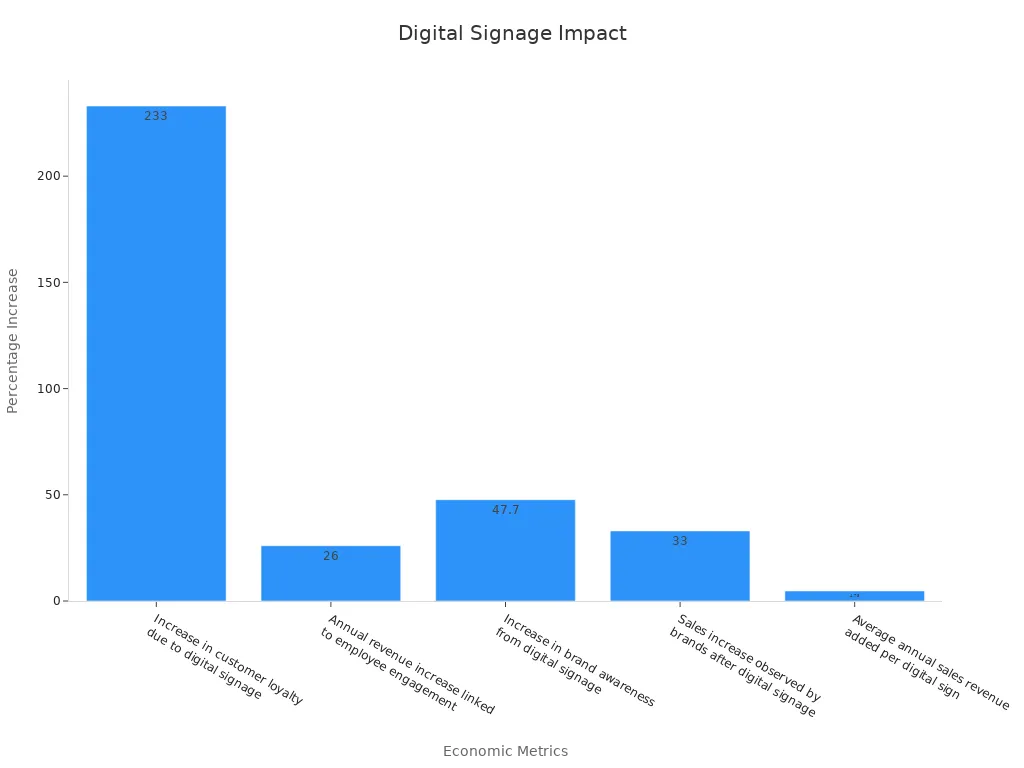
Real-time analytics show what works and what does not. Brands can change their ads quickly to get better results. This way, they save time and get more for their money. Brands using digital signage see a 33% sales jump and a 47.7% rise in brand awareness.
Personalization also helps brands connect with people. Digital signage makes experiences that feel special and important. When people see content that fits them, they trust and remember the brand. Real-time feedback helps brands keep messages fresh and useful.
Interactive digital signage helps brands reach goals faster. Real-time updates, interactive content, and personalization work together for better results. These benefits make digital signage a smart pick for brands that want more engagement, loyalty, and sales.
Challenges and Considerations
Privacy and Security
Interactive digital signage gathers a lot of data from users. This can cause privacy and security problems for everyone. Hackers might find weak spots in the software or trick people to get passwords. They could change what shows up on screens and put up bad content. Sometimes, people make mistakes that lead to problems. Harvard says 80% of data leaks happen because of human error.
Some tools like facial recognition and RFID tracking make privacy worries bigger. The Center for Democracy and Technology says these tools can spot people without asking them. They say it is important to use privacy by design and Fair Information Practices. These steps help keep user data safe from the start.
After the pandemic, digital signage must help keep people safe. Many places use interactive kiosks, thermal scanners, and special paths to follow. These things help with health rules and protect user data. Strong security like two-factor authentication and data encryption is now common. These steps help keep private information safe.
Content Management
It is hard to manage content for digital signage. Businesses need to make sure all screens show the same message. If branding is not the same, customers might get confused. The content should also fit local languages and cultures to stay important.
The table below shows some common problems and features in content management:
Challenge/Feature Category | Description |
|---|---|
Content Consistency | Making sure all screens have the same branding and message so people do not get mixed signals. |
Content Relevance & Localisation | Changing content to fit what local people like, their language, and culture so they pay attention. |
Scalability Issues | Growing the digital signage network without losing focus or needing too much new equipment. |
Technical Integration & Compatibility | Linking signage with business systems and making sure all hardware and software work together. |
Security & Compliance | Keeping the network safe from hackers and following privacy laws when handling data. |
Content Management Workload | Handling lots of content, which needs good workflows and maybe more staff. |
Stories from schools and companies show that using many platforms can confuse people. A central content management system helps fix this. It lets teams make, plan, and share content easily. A good system can automate tasks, work from far away, and use real-time data. Teams also need to update content often and check how well it works to keep screens fresh and useful.
Future of Digital Signage
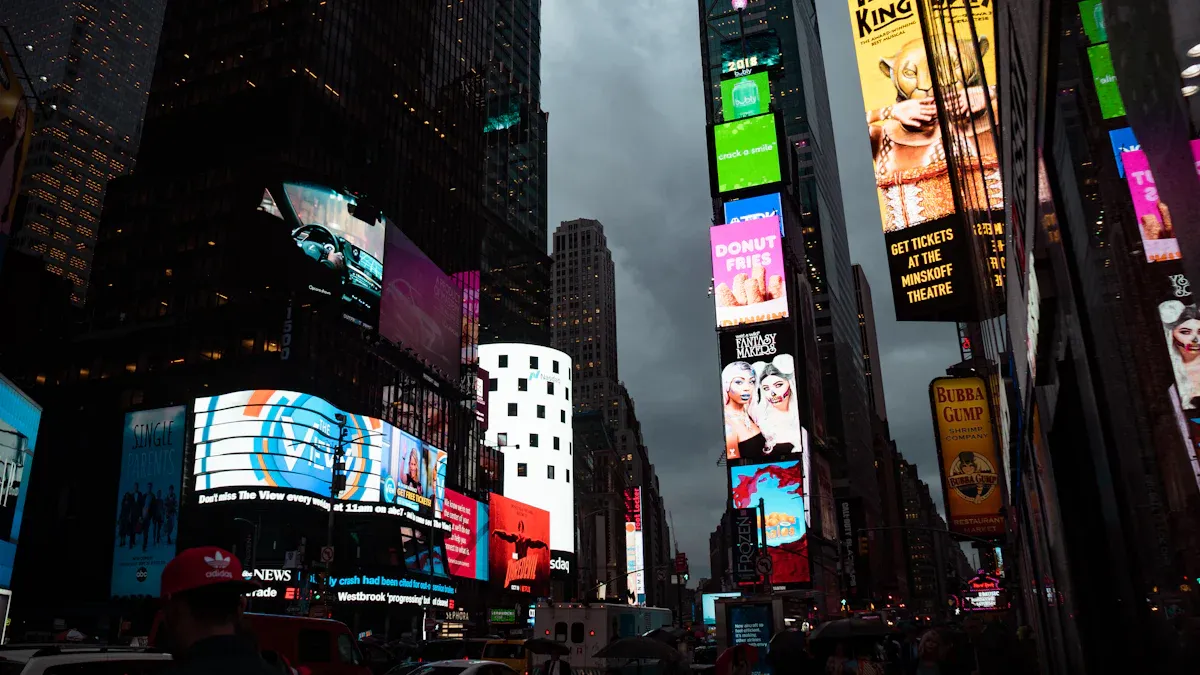
Trends and Innovations
The future of digital signage will change quickly. There are many new and exciting things coming. Experts say the market will grow a lot. The global digital signage services market could grow by almost 12% each year from 2025 to 2033. This is because more businesses, schools, and public places use digital signage. Stores, hotels, and banks will have more digital displays.
Many trends are shaping digital signage’s future:
Cloud-based content management lets people update screens from anywhere.
AI and machine learning help make content that people like.
Interactive touchscreens, motion sensors, and gesture controls let users join in.
Ultra-high-definition displays, OLED, and micro-LED screens look much better.
5G networks give fast updates, even in busy or faraway places.
AR and VR add fun and information, making ads easier to remember.
IoT connects digital signage with smart devices for real-time updates.
Eco-friendly and energy-saving displays help the planet.
Outdoor digital signage is growing fast and reaching more people.
Big video walls and screens over 52 inches are leading the market.
In North America, the digital signage market was worth $8.2 billion in 2024. It could reach $15.7 billion by 2032. This is because more people want Digital Out-of-Home (DOOH) advertising and new display tech like 4K and 8K. Smart city projects and government help also make digital signage more popular. Asia Pacific is growing the fastest, with lots of new screens in cities and businesses.
Digital signage now works with mobile devices and social media. This lets brands send updates right away and make smooth experiences. IoT and smart environments help screens show the right message at the right time. For example, a sign in a store can say hello to a shopper by name or suggest products they might like.
Note: The future of digital signage will use smarter, more connected, and more interactive systems. These trends help advertisers reach people in new ways and keep their attention longer.
Strategic Recommendations
Advertisers who want to do well with digital signage need good plans. Here are some steps to help brands stay ahead:
Set Clear Goals
Advertisers should know what they want to do. Their goals should match their audience and technology. This helps them make better choices.Create Engaging Content
Brands need to make fun and interesting content. Using high-quality displays, AR, and gesture controls makes ads stand out.Use Data and Analytics
Tracking things like dwell time, interaction rates, and sales helps advertisers see what works. Real-time analytics let them make changes fast.Adopt AI and Smart Integration
AI tools help show the best content for each viewer. Connecting digital signage with IoT and phones makes experiences more personal.Scale with Cloud Solutions
Cloud-based management lets brands update many screens at once. This saves time and keeps messages the same everywhere.Focus on Sustainability
Choosing energy-saving displays and smart power systems helps the planet and saves money.Measure and Improve
Advertisers should use feedback and engagement numbers to make their ads better. Always improving helps them do well for a long time.
Step | Action Item | Benefit |
|---|---|---|
Set Clear Goals | Match goals with audience and tech | Focused campaigns |
Create Engaging Content | Use interactive, high-quality visuals | Higher engagement |
Use Data and Analytics | Track and study key numbers | Better decisions |
Adopt AI and Smart Integration | Personalize content and connect with IoT | More relevant experiences |
Scale with Cloud Solutions | Manage content from anywhere | Consistent messaging |
Focus on Sustainability | Pick eco-friendly hardware | Lower costs, green reputation |
Measure and Improve | Get feedback and make ads better | Ongoing campaign success |
Tip: Advertisers who try new technology and keep learning will lead the way in digital signage.
The future of digital signage will give advertisers more ways to connect with people. Smart screens, real-time data, and interactive features will change how brands tell their stories. By following these steps, advertisers can use new tools and trends. This will help their advertising stay strong and work well.
Interactive digital signage changes ads by making them more personal. Brands use real-time data, AI, and cloud tools for special experiences. Each customer can see something just for them. The table below shows the main benefits and problems:
Aspect | Details |
|---|---|
Key Drivers | Personalized content, AI/IoT, cloud solutions, smart city adoption |
Challenges | High costs, integration, content management, cybersecurity |
Future Outlook | AI-driven content, scalable cloud, smart city expansion |
Stores like Sephora and Nike use interactive displays to get people interested. Digital signage helps with being green and uses real-time analytics. Brands that use these new ideas will do better as things change.
FAQ
What makes interactive digital signage different from traditional signage?
Interactive digital signage lets people touch, swipe, or scan for info. Traditional signage just shows one message that does not change. Interactive displays react to what each person does. This gives everyone a special experience.
How does digital signage improve advertising results?
Digital signage helps people pay more attention and remember ads. Brands get more sales and customers come back more often. Real-time updates and data help brands change ads fast for better results.
Is interactive digital signage secure for user data?
Top systems use encryption, safe logins, and privacy settings. Brands follow strong rules to keep user data safe from harm. Regular updates help protect systems from new dangers.
Which industries benefit most from interactive digital signage?
Industry | Key Benefit |
|---|---|
Retail | Increases sales and loyalty |
Hospitality | Makes guest visits better |
Education | Helps students learn more |
Healthcare | Gives real-time updates |
Transportation | Helps travelers find their way |
See Also
How Digital Display Technology Transforms Modern Communication Methods
Enhancing Customer Engagement Through Advanced Digital Signage Solutions
Measuring Business Success With Digital Signage Return On Investment
Exploring Technology Benefits And Strategies For Digital Signage Displays
Emerging Innovations And Trends Shaping The Future Of LED Signage

